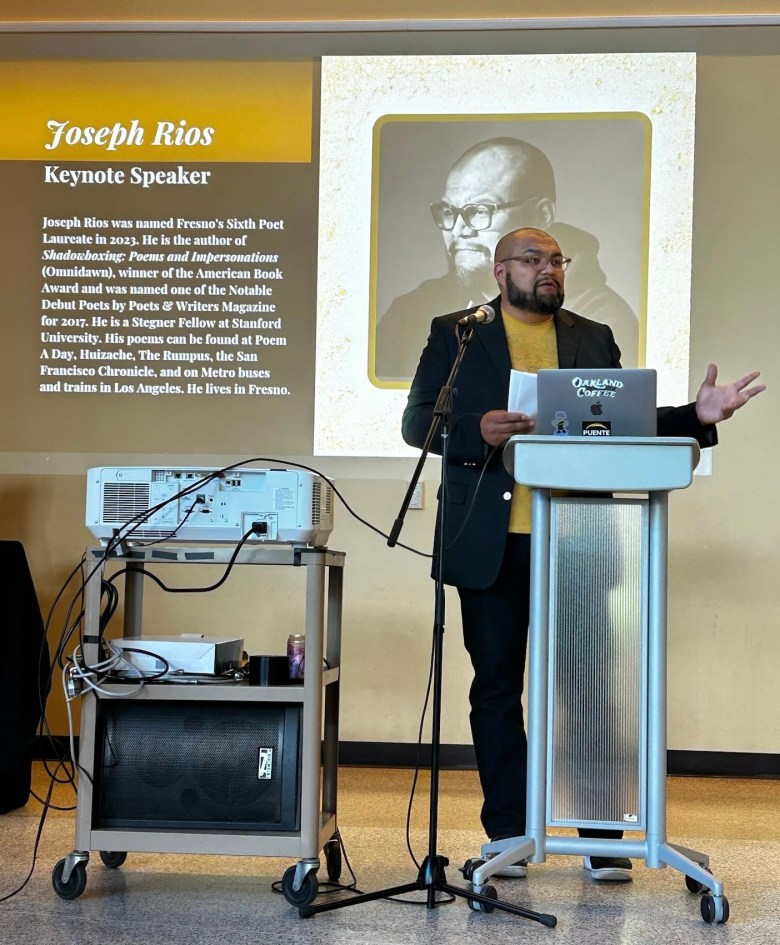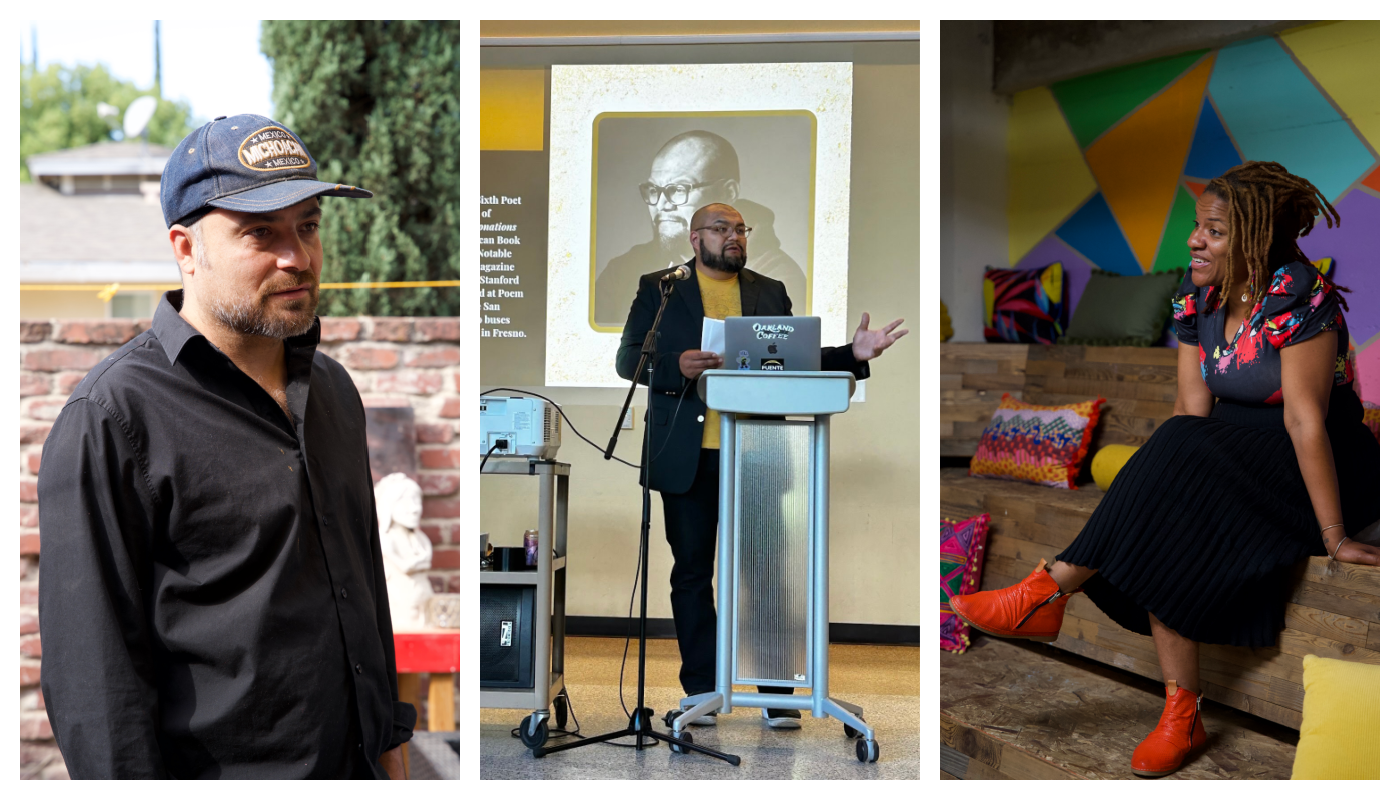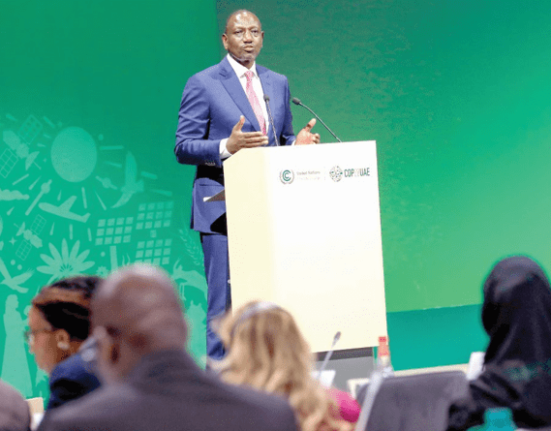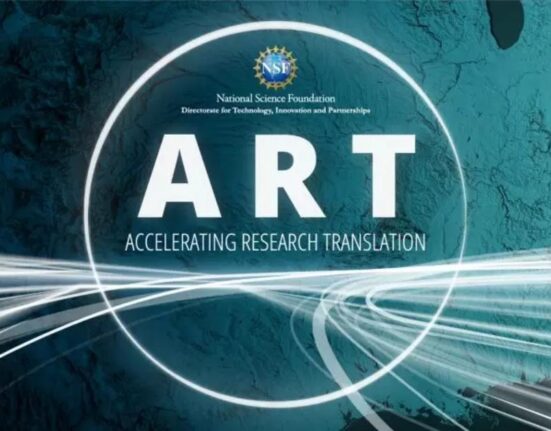What’s at stake?
Many artists in Fresno struggle to make a living. Measure P arts funding could help, but some worry the funding won’t make it into the hands of those who need it most.
Adrianna Sorondo never wanted to leave Fresno.
The 35-year-old artist says her hometown, where she grew up admiring the sculptures that once adorned the city’s bygone pedestrian mall, has always been a major influence on her work.
“It’s an artists’ city,” she said, “whether it’s recognized by the city at large or not.”
But Sorondo eventually felt like she had no choice. Opportunities to realize her passion for large-scale sculpture were few and far between. Meanwhile, she had a family to support.
So in 2019, she relocated to San Francisco, where she’s lived ever since.
She doesn’t, however, see this as the end of Fresno’s role in her art career, and made an important decision to make sure of that: Even after moving to the Bay Area, she’s held onto her Broadway Street studio in downtown Fresno.
Her ultimate goal remains to live and work as an artist in Fresno again.
“It’s not asking much,” she said, “and I think a lot of folks in Fresno would have a similar goal.”
Sorondo is far from being the only artist from the city who has faced choices like this. It’s not easy making it as an artist here – that is to say, Fresno doesn’t make it easy.
Many people, not just artists, struggle to make a living wage in California’s fifth-largest city. Fresno residents have less disposable income to spend on artwork or tickets to performances.
But there’s a new hope for the city’s artists glimmering on the horizon. That is the trove of dollars that the Measure P three-eighths cent sales tax is generating for “expanded access to local arts and cultural programs.”
That will translate to roughly $9 million in grant money for arts and culture organizations and projects in 2024.
Several artists told Fresnoland they’ve never seen local arts funding like this in their lifetimes.
“It’s hard not to be optimistic, and it’s so weird to say that in Fresno,” said the city’s poet laureate Joseph Rios, “because artists (and) poets from Fresno are not characterized by their optimism.”
At the same time, some worry whether the funding will make it into the hands of those who need it most – struggling artists and arts-based organizations that fight to even keep the lights on. They fear the money might instead get gobbled up by the city’s handful of big-budget arts-based nonprofits.
“Organizations have been kind of starved out for so long,” said Carissa Garcia, an artist and arts consultant in Fresno.
“I’m very concerned it’s going to be a top-down structure,” she added, “that the money is going to go toward the largest organizations in hopes that they’re going to feed all of the funding that circulates (in) our economy. I think we all know that’s never how it really works.”

How Fresno artists pay their bills
The lack of local funding opportunities for artists in Fresno hasn’t stopped them from creating world-renowned works of art.
MacArthur geniuses, Pulitzer prize and Academy Award-winning writers, state and national poet laureates, Broadway stars, and respected artists in an array of mediums have all called Fresno home.
There’s a reason for that, said Fresno artist Caleb Duarte – even though the city often lies in the shadow of California’s big cities and storytelling epicenters in Los Angeles and San Francisco.
“There’s a romance to the idea of being forgotten,” he said, “and there’s also a sense of liberation from that.”
“There’s a lot of richness, a lot of different immigrant groups” in Fresno, he added. “Not as a melting pot, but as a place where many different worlds can exist within that one.”
The inextricable tie between art and cultural tradition is what makes the arts just as important for the city to invest in as other needs, said Lilia Gonzáles Chávez, executive director of the Fresno Arts Council.
“For many people, particularly people who carry on cultural tradition or cultural folkways,” she said, “that is not looked at as art. It’s just part of one’s culture. It’s what we do.”
But surviving as an artist in Fresno has required sacrifice and compromise.
The city’s Cultural Arts Plan – a document that identifies the needs in the city’s arts ecosystem to help guide Measure P investments – lays out this dilemma. Only 6% of Fresnans surveyed said they derive their primary source of income from their artwork. At the same time, more than 50% of those surveyed said they create or practice art in some form.
Multiple Fresno artists told Fresnoland they’ve had to rely on food stamps and other government assistance programs to make ends meet.
Some, like Duarte, support themselves partly through teaching their craft – in his case, sculpture at Fresno City College.
But not all artists feel called to teach, and that includes Rios.
For years his strategy instead involved taking on odd jobs like building furniture or working as a janitor, saving up money, then quitting for a couple months at a time to focus on writing while living off “the bare minimum” financially.
“I can’t shove what I want to do into a nine to five,” he said. “At my own peril, I went with something, fled from security, fled from dependability, fled from dependable income … always with the ability to just parachute out.”

How will the Measure P arts funding work?
Enter Measure P, and the potentially transformational funding it promises the city’s arts community.
The ordinance sets aside 12% of the local sales tax’s revenue each year toward grants for nonprofit organizations that support arts and cultural programming.
Fresno Arts Council, the local arts agency that will administer the arts funding, estimates there will be $9 million available in grants this first cycle and an average of $5 million each year after that.
Applicants will vie for two types of grants, according to the Arts Council’s guidelines that just received Fresno City Council’s approval Nov. 16.
There are the project-specific grants, which will fund proposals between $2,000 and $200,000.
There are also general operating support grants, which are meant to support eligible nonprofits with rent, utilities, staff salaries, and other expenses. These vary in amount depending on the size of a nonprofit’s budget but are capped at $300,000.
A several-thousand-dollar grant like that could be a gamechanger for an organization like Breakbox Thought Collective, Breakbox’s executive director Jamillah Finley told Fresnoland.
The nonprofit offers a range of programs for people of all ages, focused on healing through arts and culture. It also offers multiple programs that center Black youth, including its publication Ashe’ Magazine.
Breakbox has reached hundreds of young people through its events and programs – but the nonprofit has just seven full-time staff at the helm.
“I do administrative stuff, I do program design, I do the editing for our publications,” she said. “Each one of us is only one person trying to do how many things? That’s why it’s not sustainable.”
“We need more personnel,” she added. “I think that infrastructure is one of the biggest things in terms of us being long-term and being around for a good long time.”

Concerns about the Measure P grant guidelines
While Fresno artists dream big about Measure P possibilities, they have concerns, too.
For one, individual artists alone can’t apply for Measure P grants unless they have a fiscal sponsor.
Omé Lopez, founder of the multimedia arts collective Dulce Upfront, questioned how younger artists without existing ties to nonprofit organizations will ever get their hands on the funding.
“How do you expect that kid coming out of Fresno High School who’s a muralist … or she’s a poet, she’s writing her things, she’s 18 years old – you expect her to navigate this sector?”
“It totally limits the diversity of voices and perspectives in the arts community,” Lopez added, “and it really does hinder the discovery of new talent.”
The stipulation regarding individual artists is rooted in the language of the Measure P ordinance – and efforts to guarantee to voters that the money would end up in trustworthy hands, Gonzáles Chávez of Fresno Arts Council said.
“There was an understanding that if we wanted people to support this ordinance,” she said, “we were going to have to include safeguards that demonstrated that we were making grants responsibly.”
Others have worried larger organizations would swallow up a large share of the funding.
Several of Fresno’s arts and culture nonprofits eligible for operating support grants received upwards of $251,000 in revenue in the 2021-22 fiscal year, according to city documents provided to Fresnoland. That makes them eligible for as much as $300,000 in operating support.
Among these bigger budget organizations are the Alliance for California Traditional Arts, Radio Bilingüe, Valley Public Television, the Community Media Access Collaborative, the Fresno Philharmonic, and the Hmong Cultural New Year Celebration, Inc – each of which had revenue over $1 million in the 2021-22 year.
The Fresno Arts Council technically meets these criteria as well but will not apply, Gonzáles Chávez said.
“They could get an additional $200,000 in project support. If you play that out, what is that, like 10 organizations getting $500,000?” said ACTA’s executive director Amy Kitchener, who voiced her concerns over the draft guidelines at public meetings. “That’s how quickly that money could go.”
The guidelines try to tackle this concern by including a stipulation that priority should be given to the “emerging” nonprofits with budgets under $50,000 to help them “build capacity and expand their ability to reach and serve residents and visitors” in Fresno.
City councilmembers also approved revisions to the guidelines Nov. 16, requiring organizations to identify the current audience they serve. This came after concerns from community members about honoring the intention of Measure P to award grants to organizations and projects that engage with diverse and younger populations.

A ‘learning year’ for the Fresno Arts Council
Despite these and other provisions that have been added to the guidelines, there are so many unknowns in this first cycle of grants, Gonzáles Chávez of Fresno Arts Council said.
“This is a learning year for us,” she said, “and for the community as a whole.”
They don’t know yet, for example, how many applicants to expect in either category.
Gonzáles Chávez also believes there are many artists out there in Fresno who may not realize what they’re doing or creating is art. Seeing some of that work brought to light in a new way is what keeps her hopeful about the outcomes of Measure P.
“I really am excited to see the ideas that come forward,” she said. “I think there’s probably unique opportunities that we haven’t even considered in the past because we just didn’t have the resources.”
A similar commitment to Fresno and the community keeps artists here, figuring out ways to make ends meet in the meantime.
Or, in Sorondo’s case, holding onto studio spaces in downtown Fresno, counting on the day it will be possible to live and work again in the place she calls home.
“We just want a room to paint in,” Sorondo said. “Or a shelf to put our stuff. And some people to look at it, maybe.”






